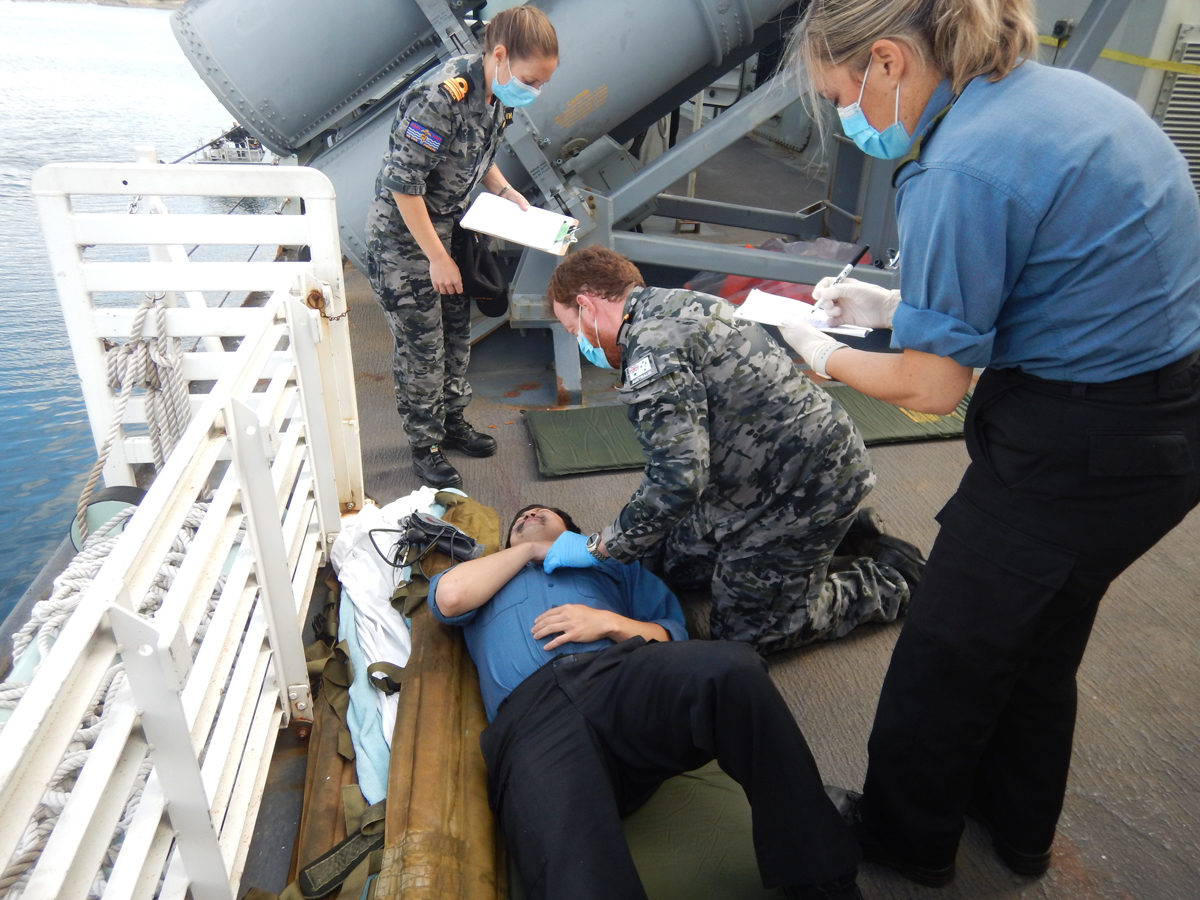Submarine Medicine training brings global allies to CFB Esquimalt
By Lookout Production on Jul 13, 2022 with Comments 0

Lieutenant Commander Michael Halpin (Royal Australian Navy) and Lieutenant (Navy) Irene Doucette (Royal Canadian Navy), under the guidance of Directing Staff Lieutenant Commander Rebecca Ainsworth (Royal Australian Navy), provide triage to a simulated casualty during a CFB Esquimalt-held Submarine Medicine Course’s final Submarine Search, Escape and Rescue Exercise (SMASHEX) in June 2022.
Hadley Parsons
Public Affairs Office
—
Physicians and Physician Assistants from the Royal Canadian Navy and several allied nations came together for a Submarine Medicine course at Canadian Forces Base (CFB) Esquimalt last month.
“The international community of medical personnel with these skill sets is small, but the training is very important to ensure navies can meet the demands of underwater operations,” said Lieutenant-Commander (LCdr) Kaighley Brett, the Assistant Course Director and Head of the Canadian Forces Environmental Medicine Establishment School of Operational Medicine.
The Submarine Medicine course is normally held once a year but, due to the COVID pandemic, this was the first one since 2019.
The course allowed military members from Canada, Australia, Israel, the Netherlands and Singapore to study the challenges of practicing medicine in the confined and pressurized spaces of submarines.
During the submarine Search, Escape and Rescue Exercise (SMASHEX), Canadian Armed Forces sailors simulated submariners escaping a distressed submarine, while the students ran them through triage and simulated treatment techniques learned on the course. The SMASHEX also provided an opportunity to coordinate with and learn from non-medical personnel, like submariners and divers, who will be critical in submarine emergency situations.
On the course, students learned how physicians, physician assistants, and divers can work together to recompress escapees of distressed submarines using recompression chambers, also known as hyperbaric chambers. These chambers recreate high-pressure environments normally experienced at deep sea and are used for treating submariners with decompression sickness.
On top of learning submarine medicine, the course taught the students about international naval vessels and operating procedures, helping prepare for future potential multi-national submarine rescues, in conjunction with the International Submarine Escape and Rescue Liaison Office (ISMERLO). ISMERLO is an international organization specifically designed to facilitate multinational rescues to distressed submarines.
“When international military members come together on a course like this, we see a unique opportunity for them to share specific knowledge and training from their home countries,” said LCdr Brett.

Physician Assistants Captain Michael Jerrott (Canadian Armed Forces) and Lieutenant Patrick Owens (Royal Australian Navy) provide medical care to a simulated casualty during a CFB Esquimalt-held Submarine Medicine Course’s final Submarine Search, Escape and Rescue Exercise (SMASHEX) in June 2022. All photos supplied
Filed Under: Top Stories
About the Author:





